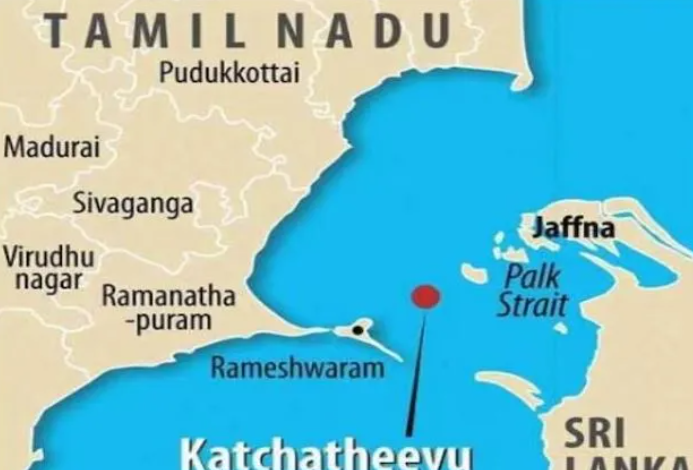No man’s land (GS Paper 2, India and its Neighbourhood relations)

Why in news?
- Prime Minister Narendra Modi, by raking up the contentious matter of Katchatheevu, has set an unhealthy trend of politicising an issue for electoral gains, and one that has bearing on ties with Sri Lanka.
- Mr. Modi, on March 31 on X, stated that “new facts reveal how Congress callously gave away #Katchatheevu”.
Katchatheevu as a part of Sri Lanka
- Even though the State BJP, like other parties in Tamil Nadu, has been talking about the island’s retrieval, the situation gets complicated when its national leadership too lends its voice.
- As with the Congress-led UPA government, the BJP-led NDA regime too has seen the islet as a part of Sri Lanka.
- In 2022, the External Affairs Ministry (MEA) informed the Rajya Sabha that “Katchatheevu lies on the Sri Lankan side of the India-Sri Lanka International Maritime Boundary Line [IMBL]”.
Role of Indian Court
- In 2013, the UPA regime told the Supreme Court that the question of retrieval did not arise as no territory belonging to India was ceded to Sri Lanka.
- It contended that the islet was a matter of dispute between British India and Ceylon and that there was no agreed boundary, a matter settled through the 1974 and 1976 agreements, leading to the IMBL.
- A little after Mr. Modi became Prime Minister, an MEA affidavit in the Madras High Court stated that sovereignty over Katchatheevu “is a settled matter”.
- But the present government has also been telling Parliament that the matter relating to the islet is subjudice as it was before the Supreme Court.
Crux of the row
- The crux of the row now is whether the Congress, under Jawaharlal Nehru or Indira Gandhi, had “callously” handled the matter.
- Documents from an RTI query by BJP State president K. Annamalai reveal that the Indian leadership, before the agreements of 1974 and 1976, had recognised that it did not have a strong case over the territory, even though the area was part of the zamindari of the Raja of Ramanathapuram since 1803.
- A report in The Hindu (March 1972) says the annual church festival began over “90 years ago”.
- But, what must have troubled the Indian authorities, going by the minutes of a meeting in Chennai in 1974 between Foreign Secretary Kewal Singh and Chief Minister M. Karunanidhi, were historical facts aiding Sri Lanka.
- These include the reference by an Indian survey team in 1874-76 to Kathatheevu being a part of Sri Lanka, Sri Lanka’s assertion of sovereignty since 1921 when talks began to demarcate the fishery line in the Palk Bay, and the inability of the Madras Presidency to establish the islet’s original title.
- Besides, Sri Lanka had been exercising jurisdiction over the territory since the mid-1920s without protest by India.
- Nehru’s observation on “giving up our claim” or constitutional expert M.C. Setavald’s favourable opinion is thus cited by critics of the Congress and the DMK, but the RTI documents show that the decision had sound basis.
About Katchatheevu
- Katchatheevu, a tiny uninhabited island spanning 285 acres in the Palk Strait between India and Sri Lanka, is spread over 1.6 km in length and slightly over 300 m wide at its widest point.
- The island was controlled by the British Ceylon since 1921.
- Though the Indian government never controlled it, the island remained disputed until 1974 between India and Sri Lanka when India recognised Sri Lanka's sovereignty over the island.
Way Forward
- It is understandable if political leaders in Tamil Nadu raise the demand of Katchatheevu’s retrieval every now and then, but it would be extremely disturbing if the Prime Minister too joins the bandwagon.


